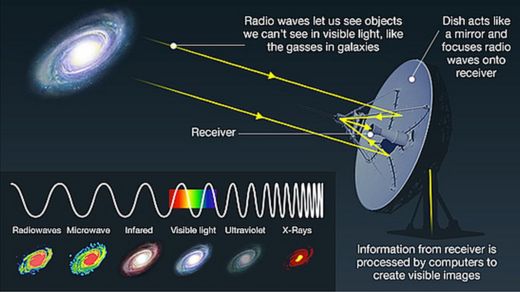Jodrell Bank Observatory has been selected as the latest UK candidate for World Heritage status.
The site, in Cheshire, is home to the famous Lovell Telescope, which was completed in 1957.
If the bid is successful, it would join the likes of Stonehenge and the Taj Mahal on the Unesco list of "globally important" landmarks.
Jodrell Bank bids for Unesco World Heritage status
12 October 2017
BBC News

The 250ft Mark I telescope was the largest steerable dish in the world when it was completed in 1957
Jodrell Bank Observatory has been selected as the latest UK candidate for World Heritage status.
The site, in Cheshire, is home to the famous Lovell Telescope, which was completed in 1957.
If the bid is successful, it would join the likes of Stonehenge and the Taj Mahal on the Unesco list of "globally important" landmarks.
Prof Teresa Anderson, director of the observatory's Discovery Centre, said it has a "rich scientific heritage".

She described the telescope, which was the largest of its kind when it was built, as "an icon for science".
More than 1,000 places around the world have been granted Unesco World Heritage status.
Currently, 31 sites in the UK and its overseas territories have been awarded the accolade.

Professor Bernard Lovell (right) with structural engineer Charles Husband, who designed and constructed the Lovell Radio Telescope
The site was first used for radio astronomy in 1945 by Sir Bernard Lovell and his team and, since then, its astronomers have tracked Sputnik and discovered quasars.
Prof Anderson said her team have been preparing the case for years, "so it's absolutely fantastic to reach this milestone".
Director of the Centre for Astrophysics, Prof Michael Garrett, said: "Jodrell Bank has played a leading role in radio astronomy for over seventy years, work which is reflected in the landscape of the site."
What is radio astronomy?

Radio astronomy is the observation of radio waves that are emitted from celestial bodies, such as distant galaxies or stars
Many strong sources of radio waves are invisible in normal light, so looking at radio waves reveals a completely different picture of the universe
Radio waves are better at travelling long distances than shorter wavelengths, so can provide a clearer "view" of very distant objects than can be gathered using normal light
Though the information gathered by radio telescopes is not in a visible form, it can be processed by computers to create images
Source: BBC Science
Jodrell Bank bids for Unesco World Heritage status - BBC News
The site, in Cheshire, is home to the famous Lovell Telescope, which was completed in 1957.
If the bid is successful, it would join the likes of Stonehenge and the Taj Mahal on the Unesco list of "globally important" landmarks.
Jodrell Bank bids for Unesco World Heritage status
12 October 2017
BBC News

The 250ft Mark I telescope was the largest steerable dish in the world when it was completed in 1957
Jodrell Bank Observatory has been selected as the latest UK candidate for World Heritage status.
The site, in Cheshire, is home to the famous Lovell Telescope, which was completed in 1957.
If the bid is successful, it would join the likes of Stonehenge and the Taj Mahal on the Unesco list of "globally important" landmarks.
Prof Teresa Anderson, director of the observatory's Discovery Centre, said it has a "rich scientific heritage".

She described the telescope, which was the largest of its kind when it was built, as "an icon for science".
More than 1,000 places around the world have been granted Unesco World Heritage status.
Currently, 31 sites in the UK and its overseas territories have been awarded the accolade.

Professor Bernard Lovell (right) with structural engineer Charles Husband, who designed and constructed the Lovell Radio Telescope
The site was first used for radio astronomy in 1945 by Sir Bernard Lovell and his team and, since then, its astronomers have tracked Sputnik and discovered quasars.
Prof Anderson said her team have been preparing the case for years, "so it's absolutely fantastic to reach this milestone".
Director of the Centre for Astrophysics, Prof Michael Garrett, said: "Jodrell Bank has played a leading role in radio astronomy for over seventy years, work which is reflected in the landscape of the site."
What is radio astronomy?

Radio astronomy is the observation of radio waves that are emitted from celestial bodies, such as distant galaxies or stars
Many strong sources of radio waves are invisible in normal light, so looking at radio waves reveals a completely different picture of the universe
Radio waves are better at travelling long distances than shorter wavelengths, so can provide a clearer "view" of very distant objects than can be gathered using normal light
Though the information gathered by radio telescopes is not in a visible form, it can be processed by computers to create images
Source: BBC Science
Jodrell Bank bids for Unesco World Heritage status - BBC News